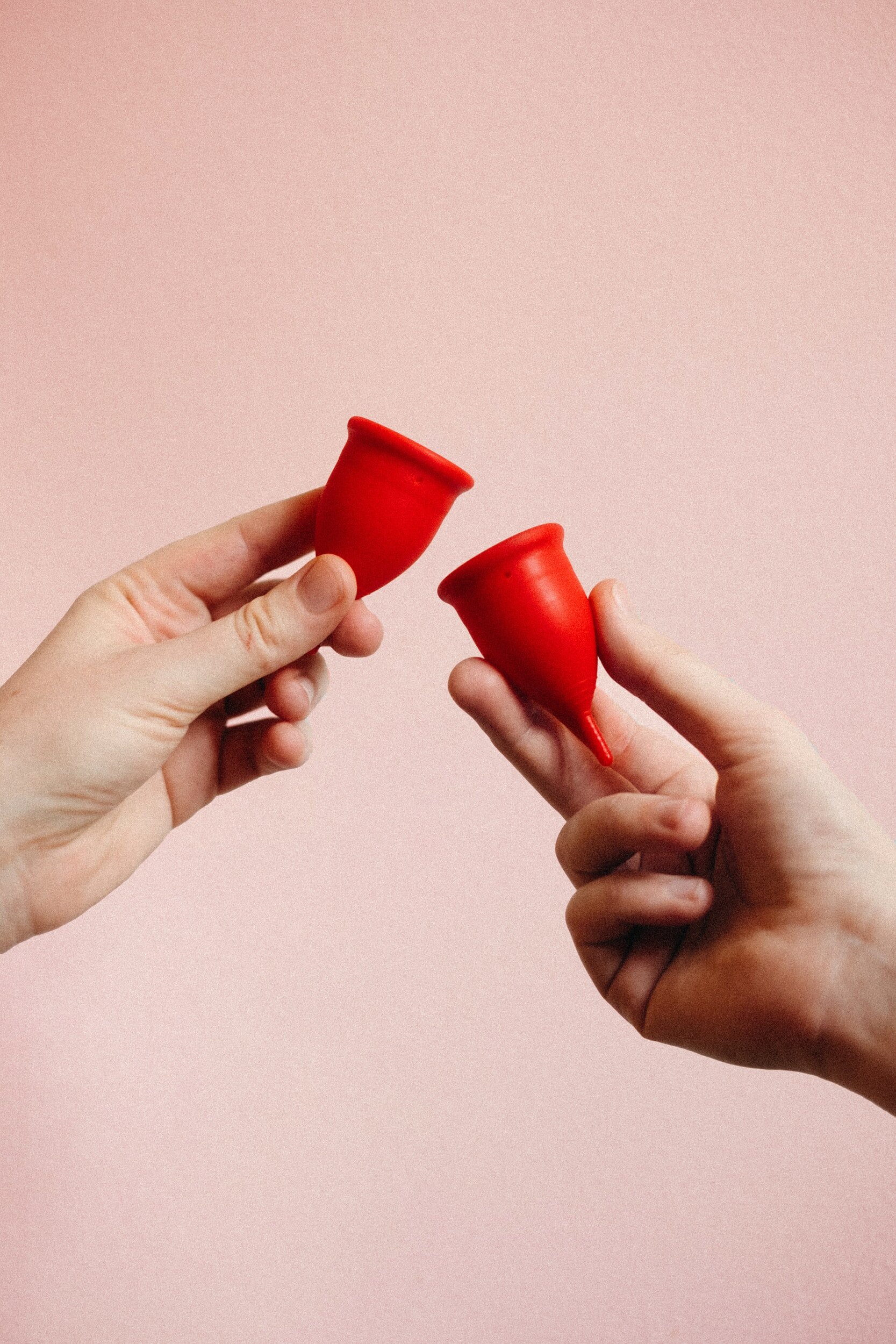Natural Treatment of Heavy Periods
Definition:
According to The World Health Organization, 18 million women aged 30-55 years perceive their menstrual bleeding to be excessive. Clinical reports demonstrate that 10% of these women experience blood loss severe enough to be clinically defined as menorrhagia. Menorrhagia is defined as prolonged or excessive menstrual bleeding that occurs at regular times each month, with a blood loss greater than 80 ml (2-3 ounces or about 1/4 cup) per menstrual period, and may have a flow lasting longer than 7 days. In comparison, a normal menstrual period has a flow measuring 25-80 ml, and can last anywhere from 3-7 days.
There are many causes of excessive menstruation, including uterine fibroids, polyps, endometriosis, endocrine imbalances, trauma, infections, or other disorders, including cancer. The term, dysfunctional uterine bleeding (DUB), is defined as excessive uterine bleeding that occurs in the absence of an underlying medical condition or structural abnormality. The term DUB can only be used when these other causes of excessive menstruation have been ruled out. DUB can occur with or without ovulation.
DUB can occur at any age, but is most common in adolescents and perimenopausal women. Approximately 20% of DUB cases are adolescents after their first menstrual cycle. These cases are due to an immature endocrine system, most notably an immature hypothalamus. Perimenopausal women account for approximately 50% of DUB patients due to decreasing ovarian function. The remaining 30% of DUB cases fall into women aged 20-40 and are typically due to polycystic ovarian syndrome (PCOS), emotional stress, athletic training, elevated prolactin levels, or anorexia.
There are four subcategories of DUB: Menorrhagia, metrorrhagia, menometrorrhagia, and intermenstrual bleeding. For the purposes of this post, I will be referring to the treatment of the subcategory, menorrhagia.
How Can I Tell If I Have This Condition?
This is a very common question. In the U.S., statistics show that anywhere from 10-20% of women suffer from diagnosable menorrhagia. However, it is likely that the percentage may be higher. Many women experience periods heavy enough to qualify as menorrhagia but consider it to be normal, commonly because their mother or some other woman in their family experiences the same type of period. Furthermore, as with other subjects of a similar nature, women often feel embarrassed to ask anyone about their periods, and may find ways to adapt without looking for medical answers. Often, women will experience menorrhagia for years, and will only seek treatment if it becomes so extreme that they cannot function normally, or once they are ready to have children. It is best to get a handle on this condition earlier rather than later as some of the causes of menorrhagia can be obstacles to conception, and prolonged DUB can very easily lead to anemia. In fact, menorrhagia is the most common cause of anemia in premenopausal women.
Signs and Symptoms of DUB
One of the most common signs of having menorrhagia is soaking through one or more sanitary pads or tampons every hour for several consecutive hours. To put this in perspective, I have done some research into various methods used for menstruation management and how they compare to monthly blood loss.
Remember, menorrhagia is defined as blood loss greater than 80 ml (2-3 ounces or 1/4 cup) per monthly flow:
DivaCup: The DivaCup holds one full ounce of menstrual flow (30 ml). If you are having to change it twice in one day and it is full both times, you have already reached 60 ml. One more change with a full cup has already put you over the 80 ml mark.
Super Tampon: Holds 0.3-0.4 ounces (about 3 saturated tampons per ounce, 6 per 1/4 cup)
Super Plus Tampon: Holds 0.4-0.5 ounces (about 2 saturated tampons per ounce, 4 per 1/4 cup)If you are saturating a pad every hour than you are probably bleeding too much.
Other signs and symptoms of menorrhagia may include:
Needing to use double sanitary protection to control your menstrual flow.
Needing to wake up to change sanitary protection during the night.
Bleeding for a week or longer.
Passing large blood clots with menstrual flow.
Restricting daily activities due to heavy menstrual flow.
Symptoms of anemia, such as tiredness, fatigue or shortness of breath.
A common finding with menorrhagia is the passing of blood clots. There are varying medical perspectives as to the cause of menstrual clots. One view is that the clots form if blood accumulates faster than the body’s ability to transfer it out of the uterus through the cervix. As it pools in the uterus, clots form. Another theory is that the body releases anticoagulants during a woman’s period that are designed to keep the blood from clotting. If the flow is heavy, the blood may be expelled too rapidly for the anticoagulants to work, resulting in the formation of clots. Many women experience clots during their period. This does not necessarily mean you have menorrhagia. However, if you are noticing clots in your period, it is important to mention the size and general amount to your doctor.
Dietary Suggestions for Treatment of Menorrhagia:
If you are suffering from menorrhagia, it is important to make some dietary changes to help improve your condition. Some of these suggestions are as follows:
Consume a diet rich in the following: Vegetables, fruits high in vitamin C, whole grains, legumes, fish high in omega-3 oils, nuts, seeds, and iron rich foods such as brewer’s yeast, wheat germ and blackstrap molasses.
Reduce saturated animal fats (beef, chicken, dairy) to support good prostaglandin formation.
Eat organic as much as possible, especially organic meat. Otherwise you are adding hormones, antibiotics and other chemicals to your body that will likely worsen menorrhagia.
Eliminate food sensitivities, as they are notorious for causing inflammation in the body, which can aggravate menorrhagia.
Avoid alcohol, as consumption may increase inflammation and worsen your symptoms.
Supplements:
OLYMPUS DIGITAL CAMERA
Flavonoids and Vitamin C: In healthy women, the integrity of capillaries decreases both after ovulation and premenstrually. Flavonoids and vitamin C enhance capillary integrity, and have been shown to reduce menorrhagia in trials. Furthermore, bioflavonoids may occupy the estrogen receptor sites on the uterus, thereby reducing the estrogen-stimulating effect on the endometrium. This, in turn, could reduce menstrual blood loss. Therefore, women who have menorrhagia may need greater amounts of vitamin C and bioflavonoids than the average woman. Vitamin C also helps in the absorption of iron. Note, vitamin C supplementation alone has not been shown to be as effective as using it in conjunction with bioflavonoids.
Iron: Although it is well known that heavy menstrual bleeding can lead to iron-deficiency anemia, it is not as well recognized that iron-deficiency anemia can actually cause or worsen menorrhagia. Iron deficiency may cause the muscles of the uterus to weaken, thereby reducing the ability of these muscles to clamp down on blood vessels, which is necessary to decrease or stop bleeding. Heavy bleeding may then worsen iron deficiency, which then worsens the bleeding, thus creating a vicious cycle. Therefore, it is very important to access iron-deficiency anemia when treating patients with menorrhagia and supplement with iron accordingly.
Vitamin A: Research has shown that a deficiency in vitamin A impairs hormone production and enzyme activity in the ovaries of animals. Although the mechanism of action of vitamin A on blood loss during menstruation is unclear, studies have shown it to have a complex interaction with estrogen. For example, the administration of estrogen has reduced the serum vitamin A levels of these animals. Furthermore, women suffering from menorrhagia have been found to have lower serum levels of vitamin A than healthy women. Note, a deficiency in vitamin C, zinc, protein, or thyroid hormone may impair the conversion of carotenes to vitamin A, thus creating a deficiency in vitamin A.
B Vitamins: Studies have shown that a deficiency in B vitamins causes the liver to lose its ability to inactivate estrogen, which could theoretically result in an estrogen excess. Since some forms of menorrhagia are caused by an estrogen excess, supplementation with B vitamins may restore the liver’s ability to properly metabolize estrogen, thereby reducing the flow of the period.
Vitamin E: Reduces capillary fragility and encourages the production of beneficial prostaglandins.
Vitamin K: Although a vitamin K deficiency is fairly rare, its role in the manufacture of clotting factors has clear implications for the treatment of menorrhagia. However, vitamin K supplementation has also been shown to eliminate excessive menstrual loss in women without a known clotting disorder, so it may be wise to include this in a treatment plan.
Ginger: Menorrhagia is believed to be due to an altered prostaglandin-2 ratio and ginger has been shown to inhibit the enzymes related to this altered ratio: prostaglandin synthetase and cyclooxygenase.
Vitex Agnus Castus (Chaste Tree): This may be the best-know herb in all of Europe for managing hormonal imbalances in women. It acts on the hypothalamus and pituitary glands to increase LH production and mildly inhibit FSH release. This results in a shift in the ratio of estrogen to progesterone, thereby helping to reduce menstrual flow. Vitex has also been shown to inhibit the release of prolactin by the pituitary gland, particularly when a woman is under stress. This herb may take 4-6 months to take effect.
Other Herbs to Consider: Shepherd’s purse, cinnamon, yarrow
Other Supplements to Consider: Flaxseed oil, fish oil, evening primrose oil (all have been shown to encourage the formation of beneficial prostaglandins).
Bio-Identical Hormones: These lab-manufactured hormones are derived from Mexican wild yams or soy beans and are biologically identical to the progesterone in a woman’s body. Natural progesterone substitutes for a lack of progesterone due to insufficient ovarian production. It is several times less potent than an synthetic progestin.
Treatment for Hypothyroid: Hypothyroidism is a common cause of menorrhagia. This is included under treatment for DUB because studies have shown reduction in menstrual blood loss in women treated for hypothyroid who had normal thyroid results but showed clinical evidence of the condition. Treatment may include thyroid hormone or relevant natural approaches.
Chinese Herbal Formulas: I have seen great success with the use of Chinese herbal formulas for the treatment of menorrhagia and will refer my patients to a TCM specialist for additional diagnosis and the use of acupuncture if necessary.
Other Treatment Considerations:
Acupuncture
Therapies to integrate body, mind and spirit
Conventional Medical Approaches:
NSAIDs
Oral Contraceptives
IUDs
Dilation and Curettage (D & C)
Endometrial Ablation
Hysterectomy
If you or someone you know is experiencing menorrhagia, please seek a qualified health care provider to begin treatment for this condition. Note: It is important to rule out other causes of menorrhagia before assuming it is DUB.
References:
Center for Endometriosis Care: www.centerforendo.com
WebMD: www.webmd.com
The Merck Manual: www.merckmanuals.com
www.womenshealthzone.com
Medscape: www.medscape.com
Nutritional Medicine: Dr. Alan Gaby, MD
The Complete Natural Guide to Women’s Health: Dr. Sat Dharaum Kar, ND
Women’s Encyclopedia of Natural Medicine: Dr. Tori Hudson, ND
Fibroids: The Complete Guide to Taking Charge of your Physical, Emotional, and Sexual Well-Being:
Johanna Skilling



